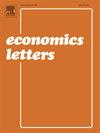金融改革和系统重要性金融机构的抵押贷款
IF 1.8
4区 经济学
Q2 ECONOMICS
引用次数: 0
摘要
我们使用洲际交易所的自营交易级别数据来研究多德-弗兰克华尔街改革和消费者保护法案(DFA)如何影响美国六大金融机构(sifi)的抵押贷款风险承担。在DFA之后,这些银行发放的抵押贷款减少了,平均贷款价值比(LTV)更低,与其他贷款机构相比,高LTV抵押贷款也更少。我们的研究结果表明,DFA减少了sifi的风险承担,但同时也增加了非sifi的高ltv贷款,表明风险向监管较少的机构重新分配。我们提供了第一个交易层面的证据,将DFA与抵押贷款风险的可衡量变化联系起来。本文章由计算机程序翻译,如有差异,请以英文原文为准。
Financial reform and mortgage lending by systemically important financial institutions
We use proprietary transaction-level data from Intercontinental Exchange to examine how the Dodd–Frank Wall Street Reform and Consumer Protection Act (DFA) affected mortgage risk-taking by the six largest US financial institutions (SIFIs). Following DFA, these banks originated fewer mortgages, with lower average loan-to-value (LTV) ratios, and fewer high-LTV mortgages compared to other lenders. Our findings suggest that DFA curtailed risk taking among SIFIs but coincided with increased high-LTV lending by non-SIFIs, indicating a redistribution of risk to less regulated institutions. We provide the first transaction-level evidence linking DFA to measurable shifts in mortgage risk.
求助全文
通过发布文献求助,成功后即可免费获取论文全文。
去求助
来源期刊

Economics Letters
ECONOMICS-
CiteScore
3.20
自引率
5.00%
发文量
348
审稿时长
30 days
期刊介绍:
Many economists today are concerned by the proliferation of journals and the concomitant labyrinth of research to be conquered in order to reach the specific information they require. To combat this tendency, Economics Letters has been conceived and designed outside the realm of the traditional economics journal. As a Letters Journal, it consists of concise communications (letters) that provide a means of rapid and efficient dissemination of new results, models and methods in all fields of economic research.
 求助内容:
求助内容: 应助结果提醒方式:
应助结果提醒方式:


